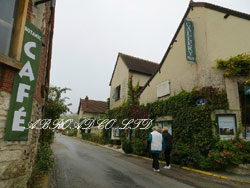southwest region climate in summerhouses for rent wilmington, nc under $1000
southwest region climate in summer
- フレンチスタイル 女性のフランス旅行をサポート
- 未分類
- southwest region climate in summer
Figure by Ingrid Zabel for PRI's [emailprotected] project (CC BY-NC-SA 4.0 license). Soil moisture, ground water, and streamflow are part of Drought Monitor calculations (Figure 2), and they are all sensitive to human activities. NOAA (National Oceanic and Atmospheric Administration). Southwest Increased heat, drought, and insect outbreaks, all linked to climate change, have increased wildfires. Home Regions Southwest Key Points: Since then carbon dioxide emissions have been on a downward trend. The population of any industrialized and particularly wealthy country produces pollution; the majority of these emissions come from the use of petroleum. Saguaro and cholla cacti in the Sonoran Desert National Monument, Arizona. Creative Commons Attribution 2.0 Generic license, Scenarios for Climate Assessment and Adaptation, Image by The High Fin Sperm Whale, created from images by NOAA National Weather Service training material (Wikimedia Commons, public domain), Creative Commons Attribution-ShareAlike 4.0 International license, Modified from a map by Adam Peterson (Wikimedia Commons, Photo by Bob Wick, Bureau of Land Management (flickr, public domain), Creative Commons Attribution-ShareAlike 3.0 Unported license, Photo by Richard Stephen Haynes (Wikimedia Commons, Photo of USNM PAL 165239 by Crinoid Type Project (Smithsonian National Museum of Natural History, public domain), Photos of YPM IP 529539 by Jessica Utrup, 2015 (Yale Peabody Museum of Natural History/YPM, CC0 1.0 Universal/Public Domain Dedication, Photo of USNM P 38052 by Frederic Cochard (Smithsonian National Museum of Natural History, public domain), Creative Commons Attribution-NonCommercial-ShareAlike 2.0 Generic license, Cretaceous Atlas of Ancient Life: Western Interior Seaway, Creative Commons Attribution-NonCommercial-ShareAlike 4.0 International, Photo of USNM 166396 from the Cretaceous Atlas of Ancient Life, Creative Commons Attribution-NonCommercial-ShareAlike 4.0 International license, Inset image from the NASA Jet Propulsion Laboratory (PIA03397), Photo by Jeffrey Beall (Wikimedia Commons, Creative Commons Attribution 4.0 International license, Photo by Kenneth Carpenter (Wikimedia Commons, Creative Commons Attribution-NonCommerical 2.0 Generic license, Photo by Center for Land Use Interpretation, Creative Commons Attribution-Noncommercial-ShareAlike 3.0 license, Creative Commons Attribution-ShareAlike 2.0 Generic license, Photo by Dr. David Goodrich, NOAA (NOAA Photo Library ID wea04192, NOAA's National Weather Service, via flickr, Images by Lauren Dauphin, NASA Earth Observatory, Photos by Lauren Dauphin, NASA Earth Observatory, NASA Earth Observatory image by Lauren Dauphin (NASA Earth Observatory, Photo by Santa Fe National Forest (National Interagency Fire Center on flickr, public domain), https://earthathome.org/de/talk-about-climate/, https://earthathome.org/de/what-is-climate/, https://earthathome.org/de/recent-climate-change/, https://earthathome.org/de/climate-change-mitigation/, https://earthathome.org/de/climate-change-adaptation/, https://earthathome.org/quick-faqs/#climate, Creative Commons Attribution-NonCommercial-ShareAlike 4.0 International licenses. Thanks to the region's high temperatures and low precipitation levels from summer 2020 through summer 2021, the current drought has exceeded the severity of a late-1500s megadrought that previously had been identified by the same authors as the driest in 1,200 years. Photos by Lauren Dauphin, NASA Earth Observatory (used following NASA's image use policy). These oases were fed by groundwater that originated in the higher country of what is now western Colorado. Unless otherwise indicated, text and images on this website have Creative Commons Attribution-NonCommercial-ShareAlike 4.0 International licenses. 2020 Monsoon Review - National Weather Service Brown indicates areas where experts forecast drought will persist or worsen. The formation of precipitation also causes electrical charging of particles in the atmosphere, which in turn produces lightning. Right:Sabalites, a palm leaf. Asia, Climate of Southwest | SpringerLink A couple of field campaigns, including the Arizona-based South-West Monsoon Project (SWAMP, 1993) and the international North American Monsoon Experiment (NAME, 2004), provided a lot of observational data and resulted in a better understanding of the mechanics of the monsoon. August 2022 U.S. Climate Outlook: a wet Southwest - NOAA Climate.gov For southern and western Colorado, the intrusions of moist air are most common from mid July into September associated with wind patterns sometimes called the Southwest Monsoon. All the weather intel you need for summer 2021 is here -- including what's in store for wildfire season . While changes in the growing season can have a positive effect on some crops (such as melons and sweet potatoes), altered flowering patterns due to more frost-free days can lead to early bud bursts, damaging perennial crops such as nuts and stone fruits. Mesohippusmeasured up to 70 centimeters (2 feet) at shoulder height. Average is based on 19792020 using CPC Unified data. By comparison, the average high and low temperatures for the entire United States are 17C (63F) and 5C (41F), respectively. Secure .gov websites use HTTPS Southwest Region Climate - Local Tips for Planning - SW Lakes USA | View Google Privacy Policy. A= Tropical (equatorial),B= Arid,C= Temperate (warm temperate),D= Continental (cold),E= polar. When you add in the sparse rain-gauge observations available in the U.S. Southwest and Mexico, it becomes even more difficult to make confident statements about the effects of the monsoon and how it can be predicted. Fig. One recent study explored the relationship between the monsoon and wildfires in the Southwest and northern Mexico, finding that monsoon rains were important for ending wildfires. Left (1):Leaves of a seedling. JulyAugust rainfall anomaly averaged over North American Monsoon region for every year 19502019 (y-axis) versus Nio-3.4 index (x-axis). During the Paleocene to Eocene, the Southwests climate was warm and wet, and large mammals roamed the forested landscape. As a result of displacement due to continental rifting and seafloor spreading, sea level throughout the Cretaceous was much higher than it is today. Photo by Santa Fe National Forest (National Interagency Fire Center on flickr, public domain). During the Permian, shallow marine waters gave way to lowland coastal areas across portions of the Southwest. Large glaciers were found at higher elevations, and temperatures were cool. You mentioned, if I understood correctly, that a La Nina pattern during winter months leads to an increase in the North American Monsoon in late summer. Sun and storm in Weld County, in the Great Plains region of Colorado, 2015. Data for Figures 1 and 3 were obtained from the National Oceanic and Atmospheric Administrations National Centers for Environmental Information, which maintains a large collection of climate data online at: www.ncdc.noaa.gov/cag. The cities of Aspen and Lafayette, Colorado, as well as the state of New Mexico, were early adopters of the 2030 Challenge, an effort to reduce fossil fuel use in buildings so that both new and renovated buildings would qualify as carbon neutral by the year 2030. Burning those fossil fuels releases carbon into the atmosphere, which warms the Earth. A value between -2 and -3 indicates moderate drought, -3 to -4 is severe drought, and -4 or below indicates extreme drought. After the end-Cretaceous bolide impact, the climate may have cooled briefly, but it soon rebounded to a warmer state. UK regional climates - Met Office Agua Caliente solar farm, Maricopa County, Arizona. Scattered pockets of drier, Mediterranean temperatures can also be found. . Explore how climate change is affecting the Southwest. The Central American Isthmus, which today makes up most of Panama and Costa Rica, rose out of the ocean at approximately this time, formed by undersea volcanoes. These are blog posts, not official agency communications; if you quote from these posts or from the comments section, you should attribute the quoted material to the blogger or commenter, not to NOAA, CPC, or Climate.gov. Copyright 2021 Paleontological Research Institution. 2021. Dark gray is land, white and light gray are submerged areas. Much of the Southwest became an archipelago of warm shallow seaways and uplifted islands, with terrestrial swampy forests and shallow sea floors populated by bivalves, brachiopods, arthropods, corals, and fish. Shallow seas invaded the continent, ultimately covering the whole area until the late Carboniferous. Paleontological Research Institution Special Publication 38, Ithaca, NY, 200 pp. What Is The Climate Of The Southwest Region - BikeHike Likewise, its not yet clear how the monsoon is changing in the warming climate, or how it will in the future. Its largely too soon to tell. The Southwest contributes significantly to climate change. Precipitation, while sparse, peaks in the summer during the monsoonal storms, and again in the winter from storms originating in the Pacific Ocean. As Pangaea reached its greatest size during the early Triassic, the monsoons intensity increased, and the vast dune deserts of the late Permian were replaced by rivers and floodplains. Later in the Jurassic, the climate became more moderate; dune fields were replaced by rivers and floodplains populated by a rich dinosaur fauna (exemplified by the Morrison Formation) and large trees along rivers, streams, and grasslands. Pacific storms lose most of their moisture as they pass over the Rocky Mountains, so much of the Southwest's winter precipitation falls as snow within the areas mountainous regions. When you take an already highly variable phenomenon like rainfall, add in uncertain regional climate change impacts, and factor in the sparse data record, it gets difficult to make a strong case about exactly how the monsoon rainfall is changing. While this will help with the ongoing drought in the southwest, in many regions the precipitation deficit has been building for a long time. The Southwest has a very unique culture, climate, and geography. Image adapted from an image by Scenarios for Climate Assessment and Adaptation, first published in The Teacher-Friendly Guide to the Earth Science of the Southwestern US. The thunderstorm begins. Photo by Dr. David Goodrich, NOAA (NOAA Photo Library ID wea04192, NOAA's National Weather Service, via flickr, Creative Commons Attribution 2.0 Generic license, image cropped and resized). Summer temperatures on the South Rim, at 7000 feet (2134 meters), are especially pleasant from 50 to about 85 F (10s to 20s C). Storms form when there is strong convection in the atmosphere. Onion Creek salt diapir, a salt dome exposed at the surface at Fisher Towers, Utah. The main features that influence the areas climate are latitude, regional topography, and a low atmospheric moisture content that leads to quick evaporation. Bear Lake and Glacier Gorge, Rocky Mountain National Park, Colorado, 2011. See you then! Modified fromFigure 11 in Kirby et al. The globe about 485 million years ago, near the Cambrian-Ordovician boundary. The first letter of each zone in the key indicates its major classification. Climate Change in the Southwest - Potential Impacts - National Park Service Drier conditions occurred through the 1920s/1930s, again in the 1950s, and since 1990, when the Southwest has seen some of the most persistent droughts on record (see Figure 3). The desert experiences large temperature extremes, especially between day and night; daily temperature may change as much as 15C (60F) during the driest parts of the year. The average amount of precipitation for the United States is 85.6 centimeters (33.7 inches). The new dry-land isthmus blocked the warm ocean currents that had been flowing east-to-west from the Atlantic to the Pacific for more than 100 million years, diverting them into the Gulf of Mexico and ultimately into the western Atlantic Gulf Stream. Global temperatures fell further in the late Miocene thanks to the formation of the Himalayas. Photos of YPM IP 529539 by Jessica Utrup, 2015 (Yale Peabody Museum of Natural History/YPM,CC0 1.0 Universal/Public Domain Dedication, viaGBIF.org). Figure by climate.gov. This may be due to the growth of solar energy, and voluntary commitments to reduce emissions made by large utility companies in the state. Colorado Climate Center - Colorado's Climate - Colorado State University The rainfall generally has a strong diurnal cycle, meaning a daily pattern of mostly dry mornings, storms developing through the day, and most rainfall occurring in the afternoon and evening. Shiprock, a volcanic monadnock in San Juan County, New Mexico, rises roughly 483 meters (1583 feet) above the desert plain. AccuWeather's 2021 US Summer Forecast | AccuWeather Hey! However, the Southwest is located between the mid-latitude and subtropical atmospheric circulation regimes, and this positioning relative to shifts in these . Precipitation accumulation over the past 12 months, shown as a percent of the average mid-August through mid-August total. Thus, each Southwestern state experiences both extreme highs and lows. He pointed out that ENSO does influence Pacific tropical storms, which can supply moisture to the monsoon. The climate of the eastern plains is fairly uniform, with hot, windy summers and thunderstorms. Pangaea began to break up during the Jurassic, rifting apart into continents that would drift toward their modern-day positions. Bark beetles, which normally die in cold weather, have been able to survive through the winter and reproduce, increasing tree mortality. Although on the western edge of the North American Monsoon, California plant geography indicates it makes a large contribution to the states southern flora. Precipitation forms. Weather conditions, particularly hot, dry weather and wind that spreads flames, contribute significantly to the ignition and growth of wildfires. The warmer the air near the surface is relative to the air above it, the more potential energy it has to move up. Scale bar = 5 centimeters (about 2 inches). The formation of precipitation also causes electrical charging of particles in the atmosphere, which in turn produces lightning. Shiprock is part of the San Juan volcanic field and dates to the Oligocene (about 27 million years ago). But El Nio leads to more tropical storms than average, youre saying, because youre not new here. Reconstruction created using basemap from thePALEOMAP PaleoAtlas for GPlatesand the PaleoData Plotter Program, PALEOMAP Project by C. R. Scotese (2016); map annotations by Jonathan R. Hendricks and Elizabeth J. Hermsen for PRI's[emailprotected]project (CC BY-NC-SA 4.0license). In Utah, areas below 1200 meters (4000 feet) receive less than 25 centimeters (10 inches) per year, while higher elevations in the Wasatch Mountains receive more than 100 centimeters (40 inches). The intensification recorded since about the 1970s has been partly driven by greenhouse gas emissions (medium confidence). In 8.4, What are the projected water cycle changes?, the summary statement is there is low agreement on a projected decrease of NAmerM precipitation, however there is high confidence in delayed onsets and demises of the summer monsoon.. Large portions of the Southwest have experienced drought conditions since weekly Drought Monitor records began in 2000. During much of the year, the prevailing wind over northwestern Mexico, Arizona, and New Mexico is westerly (blowing from the west) and dry. Summer heat waves will become hotter and longer, while winter cold snaps will occur less often. Used under a Creative Commons license. Skeleton of a juvenileCamarosaurs lentus, a type of sauropod, from the Carnegie Quarry, Jurassic Morrison Formation, Dinosaur National Monument, Utah and Colorado. Photo by James St. John (flickr,Creative Commons Attribution 2.0 Generic license, image cropped and resized). By comparison, the average high and low temperatures for the entire United States are 17C (63F) and 5C (41F), respectively. Digital Encyclopedia of Earth Science: Why talk about climate change? Hailstones from a storm in Limon, Colorado, 2010. Climate change can intensify multiple stresses that push a species past a survival threshold. Las Cruces is located in the Basin and Range region of New Mexico. A lock (LockA locked padlock) or https:// means youve safely connected to the .gov website. Fossil plants, Late Cretaceous Fruitland Formation, San Juan Basin, New Mexico. This led to global cooling and dropping global sea levels. The book was adapted for the web by Elizabeth J. Hermsen, Jonathan R. Hendricks, and Ingrid Zabel in 2022. However, while the effect of warming on the storms is uncertain, temperatures have been increasing. Winter will be warmer than normal, with above-normal precipitation. Seems likely that conditions in the GM may influence annual variations in the monsoon. Source:FEMA National Risk Index. That timeworn classic is only partially true--May and September can also be great summer months. Precipitation also varies widely. Is the tropical storm season done for this part of the country? I did a quick comparison of the average JulyAugust rainfall in the monsoon region with the Nio-3.4 index, using 70 years of records. Submitted by rebecca.lindsey on Thu, 09/30/2021 - 10:14. Present Climate of the Southwestern US Fossils of a cycad (Dioonopsis praespinulosa) from the Paleocene Castle Rock Flora, Colorado. Positive values represent wetter-than-average conditions, while negative values represent drier-than-average conditions. Rainfall, as anyone who has read the ENSO Blog before will know, is an extremely complicated thing to predict! 2010. The number of days with temperatures above 35C (95F) and nights above 24C (75F) has been steadily increasing since 1970, and the warming is projected to continue. Approximately 3.5 million years ago, glacial ice began to form over the Arctic Ocean and on the northern parts of North America and Eurasia. These changes include the following: The seasonality and transmission frequency of insect-borne diseases and other infectious diseases prevalent in the Southwest, including plague, valley fever, and Hanta, are influenced by warming trends. Elevation does, however, play a key role in precipitation received throughout the Southwest. In southern New Mexico, Pleistocene fossil mammals are found that now live at higher elevations in the mountains of northern New Mexico, indicating cooler temperatures and more available moisture in the area during the late Pleistocene. Fossil mammals adapted to colder temperatures are found in the Pleistocene of Colorado. North American monsoon - Wikipedia The event devastated the Southwest, shifting a densely forested landscape to one primarily covered with fast-growing herbs and ferns. What is the weather like in the Southwest region in summer? As the Cambrian progressed, North America moved northward, and what would become much of the southwestern U.S. was located near the Tropic of Capricorn. The white arrow is pointing to one of the leaflets of a compound leaf. Temperature and Precipitation | CLIMAS The Southwest, already the driest region in the United States, has become even drier since the mid-20th century, particularly on the hottest days . The risk of dangerous wildfires is currently very high in parts of the Southwest. Data source: NOAA, 20214Web update: April2021, Key Points | Background | About the Data | Technical Documentation. Maps modified from maps by Wade Greenberg-Brand, originally published inThe Teacher-Friendly Guide to the Earth Science of the SouthwesternUS, after figure 3 in L. Grande (2013) The Lost World of Fossil Lake. Center:As warm air rises, cool air sinks. (2015) . Average temperatures found in the Southwest tend to decrease northward, which is largely the influence of latitude and elevation. However, although climate change is predicted to enhance the intensity of severe weather, there is currently no way to calculate what effect climate change will have on the frequency of specific storm eventsfor example, we might see more powerful tornados, but we do not know if we will see more of them. Precipitation has become more variable from year to year, and heavy downpours across the U.S. have increased in the last 20 years. Yet this landscape actually supports a vast array of plants and animals, along with millions of people who call the Southwest home. Percent of total annual precipitation occurring during JulySeptember, based on 19792020 using CPC Unified rain-gauge-based data. The Santa Catalina Mountains near Tucson, Arizona are surrounded desert in which saguaro cacti grow. A car with a windshield damaged by hailstones, Limon, Colorado, 2010. Scientists first noted the seasonal rainfall patterns in the Southwest in the early 20th century, with the circulation pattern being understood as monsoonal by midcentury. Since the early 1900s, the Southwest has experienced wetter conditions during three main periods: the 1900s, 1940s, and 1980s. It smoldered beneath the ground as a dormant holdover, sleeper, or zombie fire until April, when it flared up and grew into a wildfire, an almost unprecedented occurrence in the Southwest. Left:Jaw with teeth. Low annual precipitation, clear skies, and year-round warm climate over much of the Southwest are due in large part to a quasi-permanent subtropical high-pressure ridge over the region. Did La Nia drench the Southwest United States in early winter 2022/23? Southwest Region of the US Facts: Lesson for Kids This feature focuses on six states that are commonly thought of as southwestern and characterized at least in part by arid landscapes and scarce water supplies: Arizona, California, Colorado, Nevada, New Mexico, and Utah. Its remnant exists today as the Great Salt Lake. MacDonald, G.M. Flows in late summer are correspondingly reduced, leading to extra pressure on the states water supplies. During winter months, daytime temperatures may average 70 degrees F, with night temperatures often falling to freezing of slightly below in the lower desert valleys." Tornado Alley is identified. The inset image is a shaded relief image that shows the edge of the crater on the Yucatn Peninsula with sinkholes in the rock surrounding it. Cold continental conditions dominate the higher altitudes, especially within the Rocky Mountains. Climate Of The Southwest - The Southwest Region Arizona's highest elevations receive an average of 65 to 76 centimeters (25 to 30 inches), with lower areas in the states southwestern portion averaging less than 8 centimeters (3 inches). Funnel clouds (developing tornadoes) over El Paso County, Colorado, March 29, 2019. JavaScript appears to be disabled on this computer. Reconstruction created using basemap from the PALEOMAP PaleoAtlas for GPlatesand the PaleoData Plotter Program, PALEOMAP Project by C. R. Scotese (2016); map annotations by Jonathan R. Hendricks for PRI's[emailprotected]project (CC BY-NC-SA 4.0license). As the Triassic period began, the Southwest moved north from the equator. Temperatures in the southwest region average greater than states up North, because there isn't as much water vapor in upper level winds to screen direct sunlight. Changes in atmospheric pressure during the late fall and winter can lead to an accumulation of haze. Pleistocene Lake Bonneville. These deposits, including the Navajo Sandstone, are responsible for spectacular scenery in the national parks and recreation areas of northernmost Arizona and southern Utah. The Southwest has a hot desert climate, at lower elevations. The Sonoran Desert is located in southwestern Arizona and adjacent regions of California and Mexico. Streamflow totals for the decade of 2001-2010 in the Great Basin, Rio Grande, and Colorado River were between 5% and 37% lower than their 20. As of 2010, bark beetles in Arizona and New Mexico have affected more than twice the forest area burned by wildfires in those states. Maps showing the progressive closure of the Isthmus of Panama at 20 million years ago (A) and 15 million years ago (B). Every part of the Southwest experienced higher average temperatures between 2000 and 2020than the long-term average (18952020). Its not over yet, but possible that the overall monsoon rainfall in Arizona will end up being the highest on record. For example, high winter temperatures between 2000 and 2003 correlated to bark beetle outbreaks that devastated pinyon pine throughout the Southwest, leading to nearly 90% mortality at some sites in Colorado and Arizona. The climate remained warm, despite large southern ice sheets, but it had grown much drier. Copyright 2021 Paleontological Research Institution. 2021. What happened that make TS Nora so underwhelming? The strengthened Gulf Stream carried more warm, moist air with it into the northern Atlantic, which caused increased snowfall in high latitudes, leading to accelerating cooling. Note that the southwestern region of the U.S. is covered by a shallow sea. Right: As the vertical column of air turns over, with warm air at the top and cool air at the bottom, the storm begins to dissipate. In the early Carboniferous (Mississippian), ice capped the South Pole and began to expand northward. Image above: Sun and storm in Weld County, in the Great Plains region of Colorado, 2015.
Samantha Spector Net Worth,
When Do I Get My Full Sail Launch Box,
Articles S
southwest region climate in summer










